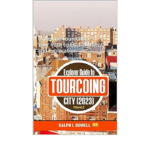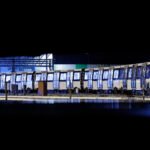
Discovering Art Deco: Exploring the Resilience of Saint-Quentin, France

The Rebirth of Saint-Quentin: From Destruction to Modernism
On November 11, 1918, the First World War came to an end, leaving a devastating aftermath. The toll on all the belligerents was staggering, with millions of lives lost. In the northeastern part of France, along the frontlines, most cities were reduced to rubble, including Saint-Quentin, which was 70% destroyed. But in the wake of the calamity, the time had come for reckoning and reconstruction. France, driven by an urgent need for renewal, was fueled by the billions in German war reparations. And so, Saint-Quentin, too, began to rise from the ashes. The city embraced the dawn of the roaring twenties and the art deco movement, spearheading a modernist wave that would leave an indelible mark on the city.
Art Deco and the Modernization of Saint-Quentin
The transformation of Saint-Quentin was nothing short of remarkable. Over the span of 50 years, the city shed its classical roots and adopted a modernist aesthetic, characterized by clean lines and the use of concrete. Some of the most beautiful art deco gems were born out of this post-war era.
 Exploring Tourcoing: Unveiling Monuments and Embracing Cultural Diversity
Exploring Tourcoing: Unveiling Monuments and Embracing Cultural Diversity
Frédéric Pillet, Annette Poulet, David Lacave, Chantal Reiss, Michel Marques, and Sam Bewley were the guardians of Saint-Quentin's history, each with their own unique perspective on the city's transformation. They shared stories of resilience, innovation, and the evolution of the city's architecture.
A City Reborn: The Basilique Saint-Quentin
As Frédéric and Annette recounted, the basilique stood as a symbol of Saint-Quentin's endurance during the four years of German occupation. It had served as a lookout point for the German army, resulting in significant damage to its vaults. However, the basilique's reconstruction was a testament to the city's determination to move forward.
One of the most striking features of the basilique was its art deco stained glass windows. These colorful, geometric designs showcased the purity of form that defined the art deco movement. The basilique also housed a remarkable example of art deco architecture in its reinforced concrete structure, a true marvel of engineering and design.
 Exploring Villeneuve-d'Ascq: A Futuristic Transportation Experience
Exploring Villeneuve-d'Ascq: A Futuristic Transportation Experience
A Tapestry of Art Deco: Hôtel de Ville
One of the city's most iconic buildings designed in the art deco style was the Hôtel de Ville, or City Hall. Designed by the renowned architect Louis Guingot, it blended modernist elements with the Gothic architecture of the original structure. Its unique design was influenced by the cubist movement and featured intricate ironwork and decorative details that spoke to the spirit of the time.
The Allure of the Grands Magasins
The city's grand magasins, or department stores, were another testament to the influence of art deco in Saint-Quentin. These commercial buildings were designed to attract shoppers with their modernist facades and innovative interiors. The use of geometric patterns, stylized floral motifs, and industrial materials was a reflection of the changing times and the desire to create a vibrant shopping experience.
The Art Deco Influence: Beyond Architecture
While art deco had a significant impact on the city's architecture, its influence extended beyond buildings. The art movement inspired the design of everyday objects, fashion, and even the way people decorated their homes. The resurgence of interest in art deco in recent years has sparked a rediscovery of the city's art deco heritage.
Exploring Saint-Quentin's streets today, one can admire the numerous art deco facades adorned with stylized floral motifs, intricate ironwork, and vibrant colors. The city has embraced its art deco past, realizing that it represents an important chapter in its history, one that shaped its identity and brought it into the modern age.
A Living Legacy: Saint-Quentin's Art Deco Heritage
Saint-Quentin's commitment to preserving its art deco heritage is evident in the various restoration projects and the city's efforts to showcase its architectural gems. The city has become a destination for art deco enthusiasts, who can now appreciate the beauty of these buildings and gain a deeper understanding of Saint-Quentin's rich history.
Walking through the city's streets, one can't help but be captivated by the art deco details that adorn the facades. From the intricate ironwork to the stylized floral motifs, every building tells a story of resilience, innovation, and the transformative power of art. Saint-Quentin has truly embraced its art deco legacy, breathing new life into a bygone era and ensuring that its vibrant heritage continues to inspire future generations.
Related video:
Here, Some Hotels in Saint-Quentin
Discover the finest hotels near Saint-Quentin.
Explore Nearby: Top excursions around Saint-Quentin
Discover the charm of Saint-Quentin with our exciting excursions. Explore its historical sites, such as the stunning Basilica of Saint-Quentin. Immerse yourself in the local culture by visiting the vibrant markets and tasting delicious regional cuisine. Don't miss the chance to experience the beauty of this enchanting city.
Si quieres conocer otros artículos parecidos a Discovering Art Deco: Exploring the Resilience of Saint-Quentin, France puedes visitar la categoría Hauts-de-France.



Deja una respuesta